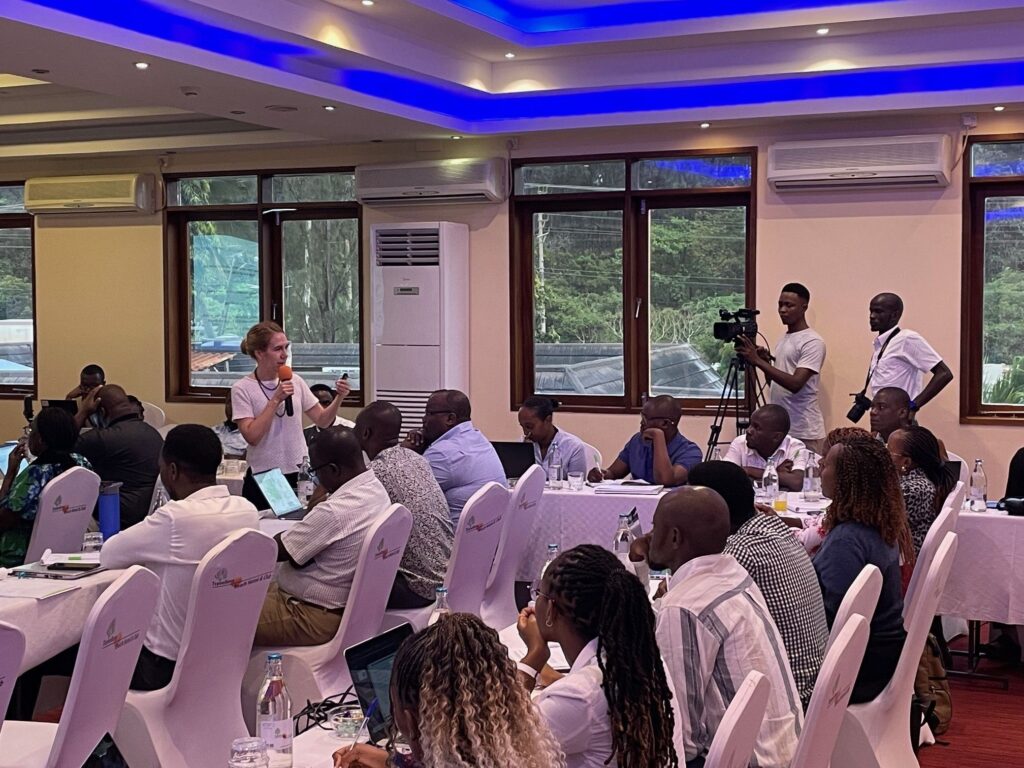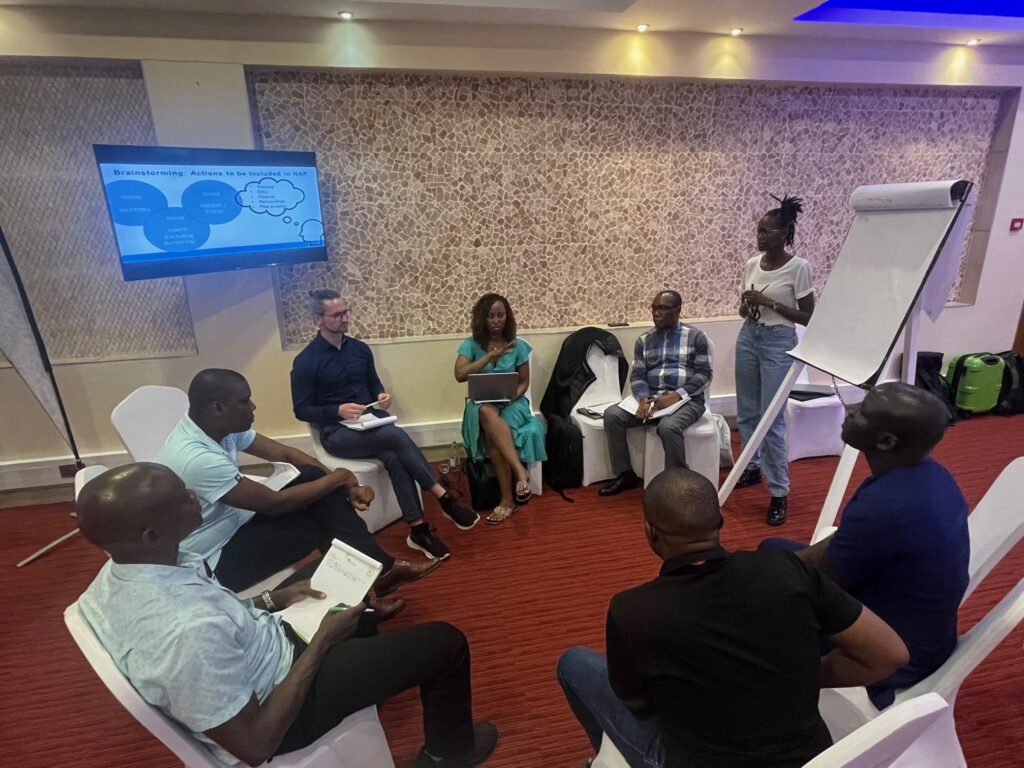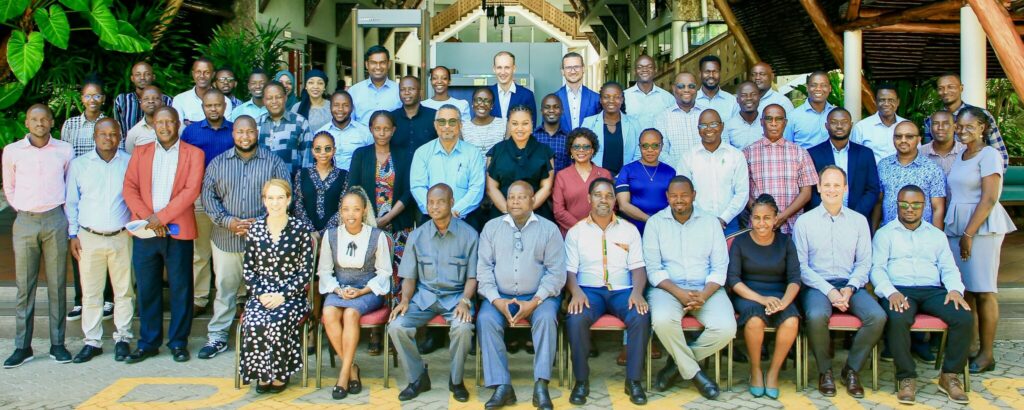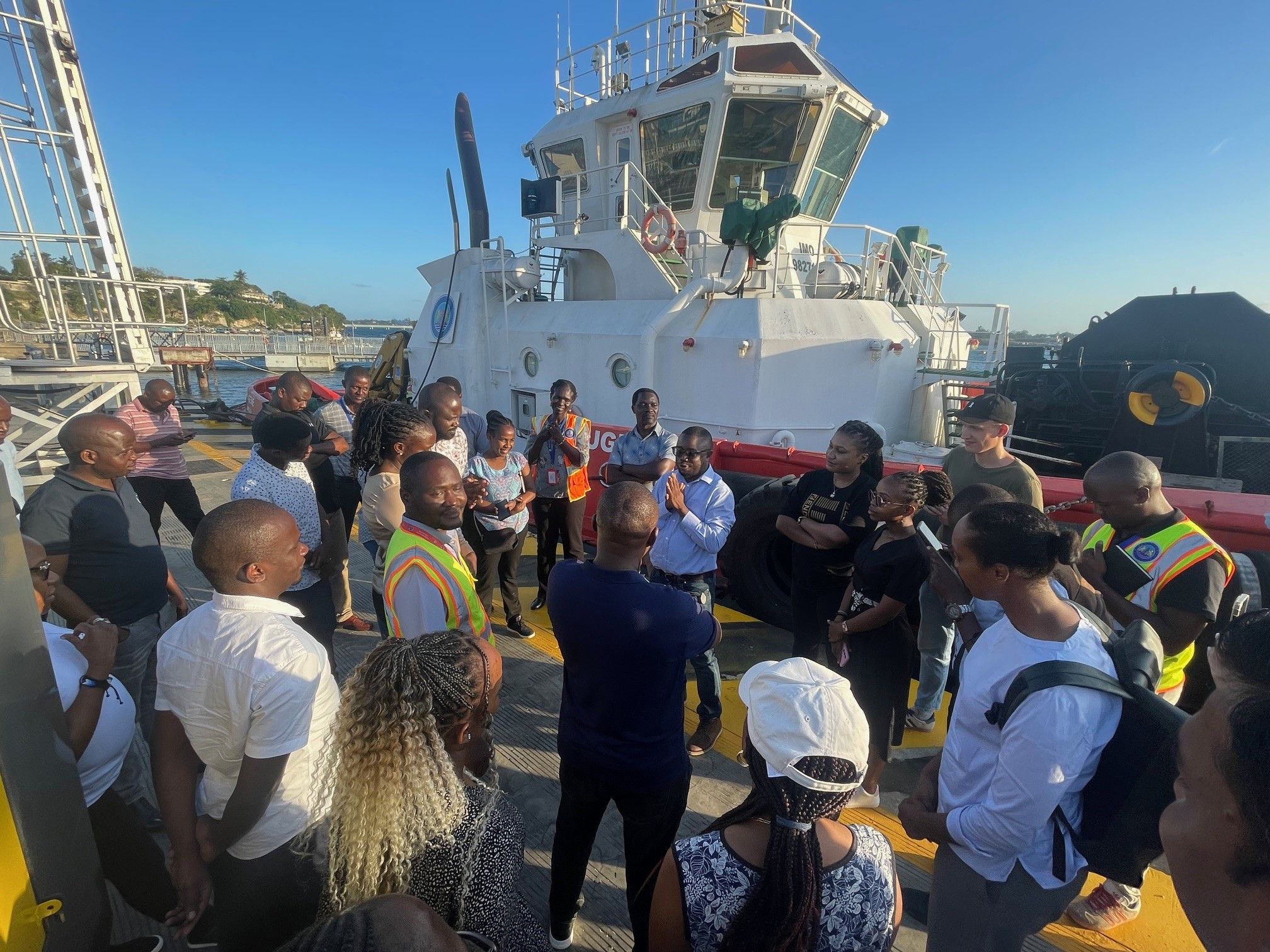Kenya generates approximately 90% of its electricity from renewable energy sources, with geothermal currently being the most significant source. With its great renewable energy potential also beyond currently installed capacities, Kenya is well positioned to become a leader in the production of sustainable fuels for the maritime sector. Progress towards connecting the shipping and energy sectors took a meaningful step forward with a joint workshop by the Kenya Maritime Authority (KMA), the International Maritime Organization (IMO), and the International Power-to-X Hub.
Over 55 stakeholders from various Kenyan government ministries, the private sector, NGOs, and academia joined the workshop in Mombasa from 9-12 September. The event underscored the urgent need for the shipping sector, which is currently heavily dependent on fossil fuels, to transition towards greener fuel alternatives. Kenya’s commitment to this transition was evident, with the country’s Green Hydrogen Strategy and Roadmap receiving focused attention, alongside announced and already developed green hydrogen production projects.

Experts presented how Kenya’s renewable energy resources could be harnessed to support the development of Green Shipping Corridors, which could serve not only Kenya’s maritime sector but also the wider East African region. The key presentations from the World Bank and the African Development Bank (AfDB) focused on financing green hydrogen projects and lessons learned from successful renewable energy projects across the continent.
Yet challenges to scale green fuel production still exist. The workshop explored the key barriers to their adoption, such as the need for greater collaboration across the value chain, and ensuring that regulations support the production and bunkering of zero- or near-zero emission fuels. The workshop also featured a stakeholders visit to the Port of Mombasa, where they learned about the Kenya Ports Authority’s (KPA) ongoing initiatives under its Green Port Policy. These initiatives include the provision of on-shore power for tug and pilot boats, development of GHG inventories, and implementation of green procurement measures to increase the port’s decarbonisation efforts.

In addition to the technical training, the event featured a roundtable on the development of Kenya’s National Action Plan (NAP) for maritime decarbonisation. Participants discussed Kenya’s long-term vision, policy actions, and potential pilot projects, laying the foundation for the drafting of the country’s first NAP. The roundtable addressed the unique challenges faced by Kenya’s maritime sector, including infrastructure gaps and capacity building needs. It also highlighted how targeted support could help overcome them.
This collaboration comes at a crucial time for Kenya. The insights and training we have received will help us move forward with a clear and ambitious vision for decarbonizing our maritime sector. With the support of our partners, we are better positioned to draft a comprehensive National Action Plan that reflects Kenya’s leadership in the green energy space.
Michael Mbaru, Deputy Director – Marine Environment Protection at the Kenya Maritime Authority
The maritime industry is at a key moment as we seek to drastically reduce GHG emissions. The shift to clean fuels represents one of the most significant opportunities to make real progress. Through Kenya’s leadership and commitment, this workshop not only opens doors for local innovation but also sets an example for how countries can harness their renewable energy potential to fuel the decarbonization of global shipping.
Astrid Dispert, GreenVoyage2050 Programme Manager at IMO
Developing a National Action Plan for Kenya will guide investments and foster policies that support a green maritime industry. This policy document will highlight the importance of adopting renewable fuels and improving the fuel efficiency of existing fleets. Combined with instruments like Green Shipping Corridors, countries are enabled to fast-track the adoption of renewable fuels and to stimulate cross-industry collaborations.
Philipp Wittrock, Lead Shipping at the International Power-to-X Hub
The training was the first event collaboratively implemented by IMO’s GreenVoyage2050 Project and the International PtX Hub. Together with the Danish not-for-profit organisation Global Maritime Forum, it was also the kick-off of the International PtX Hub’s support to the Kenyan partners to conduct a pre-feasibility for a Green Shipping Corridor, which play a critical role in achieving the IMO’s zero emission targets by 2050. By focusing on specific routes and close collaboration among key stakeholders, these corridors can help resolve barriers to the uptake of new fuels and technologies on a manageable scale.

During the week, the project team also organised a dialogue specifically for youth. Co-hosted by the Kenya Maritime Authority, IMO GreenVoyage2050, MTCC Africa, and the PtX Hub, over 75 students explored career opportunities in green shipping. They also discussed other new ways to attract young talent to the industry. The dialogue focused on strategies to increase gender diversity, which aligns with the IMO GreenVoyage2050 Project’s broader efforts to raise awareness about career opportunities and improve women representation in the sector.
Kevin Mwangi and Joy Nzue have contributed to this article.
